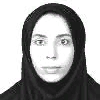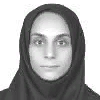International Journal of Intelligent Systems and Applications (IJISA)
IJISA Vol. 4, No. 2, 8 Mar. 2012
Cover page and Table of Contents: PDF (size: 337KB)
Classification of Heart Rate Signals during Meditation using Lyapunov Exponents and Entropy
Full Text (PDF, 337KB), PP.35-41
Views: 0 Downloads: 0
Author(s)
Index Terms
Classification, Entropy, Heart Rate Variability, Lyapunov Exponents, Meditation
Abstract
Meditation is commonly perceived as an alternative medicine method of psychological diseases management tool that assist in alleviating depression and anxiety disorders. The purpose of this study is to evaluate the accuracy of different classifiers on the heart rate signals in a specific psychological state. Two types of heart rate time series (before, and during meditation) of 25 healthy women are collected in the meditation clinic in Mashhad. Nonlinear features such as Lyapunov Exponents and Entropy were extracted. To evaluate performance of the classifiers, the classification accuracies and mean square error (MSE) of the classifiers were examined. Different classifiers were tested and the studies confirmed that for the heart rate signals, Quadratic classifier trained on Lyapunov Exponents and Entropy results in higher classification accuracy. The classification accuracy of the Quadratic classifier is 92.31%. However, the accuracies of Fisher and k-Nearest Neighbor (k-NN) classifiers are encouraging. The classification results demonstrate that the dynamical measures are useful parameters which contain comprehensive information about signals and the Quadratic classifier using nonlinear features can be useful in analyzing the heart rate signals in a specific psychological state.
Cite This Paper
Ateke Goshvarpour, Atefeh Goshvarpour, "Classification of Heart Rate Signals during Meditation using Lyapunov Exponents and Entropy", International Journal of Intelligent Systems and Applications(IJISA), vol.4, no.2, pp.35-41, 2012. DOI:10.5815/ijisa.2012.02.04
Reference
[1]Cahn B.R., Polich J. (2006). Meditation States and Traits: EEG, ERP, and Neuroimaging Studies. Psychol Bull, 132, 180-211.
[2]Goshvarpour A., Goshvarpour A., Rahati S. (2011). Analysis of lagged Poincare plots in heart rate signals during meditation, Digital Signal Processing, 21, 208-214.
[3]Goshvarpour A., Goshvarpour A., Rahati S., Saadatian V., Morvarid M. (2011). Phase space in EEG signals of women referred to meditation clinic. JBiSE, 4, 479-482.
[4]Guler I., Ubeyli E.D. (2005). An expert system for detection of electrocardiographic changes in patients with partial epilepsy using wavelet-based neural networks, Expert Syst, 22(2), 62–71.
[5]Sternickel K. (2002). Automatic pattern recognition in ECG time series, Comput Methods Prog Biomed, 68, 109–115.
[6]Owis M.I., Abou-Zied A.H., Youssef A.-B.M., Kadah Y.M. (2002). Study of features based on nonlinear dynamical modeling in ECG arrhythmia detection and classification, IEEE Trans Biomed Eng, 49(7), 733–736.
[7]Casaleggio A., Braiotta S. (1997). Estimation of Lyapunov exponents of ECG time series—the influence of parameters, Chaos Solitons Fractals, 8(10), 1591–1599.
[8]Silipo R., Deco G., Vergassola R., Bartsch H. (1998). Dynamics extraction in multivariate biomedical time series, Biol Cybern, 79, 15–27.
[9]Maaoui Ch., Pruski A. (2010). Emotion recognition through physiological signals for human-machine communication, Laboratoire d'Automatique humaine et de Sciences Comportementales University of Metz 7 Rue Marconi, 57070 Metz, France. Cutting Edge Robotics. 317-332.
[10]Goshvarpour A., Rahati S., Saadatian V. (2010). Estimating depth of meditation using electroencephalogram and heart rate signals, [MSc. Thesis] Department of Biomedical Engineering, Islamic Azad University, Mashhad Branch, Iran. [Persian]
[11]Goshvarpour A., Rahati S., Saadatian V. (2010). Analysis of electroencephalogram and heart rate signals during meditation using Hopfield neural network, [MSc. Thesis] Department of Biomedical Engineering, Islamic Azad University, Mashhad Branch, Iran. [Persian]
[12]Haykin S., Li X.B. (1995). Detection of signals in chaos, Proc IEEE, 83(1), 95–122.
[13]Abarbanel H.D.I., Brown R., Kennel M.B. (1991). Lyapunov exponents in chaotic systems: their importance and their evaluation using observed data, Int J Mod Phys B, 5(9),1347–1375.
[14]Shannon C.E., Weaver W. (1949). The Mathematical Theory of Communication. University of Illinois Press, Chicago, IL, 48-53.
[15]Shannon C.E. (1948). A mathematical theory of communication. Bell System Technical Journal, 27, 379-423.
[16]Jain A.K., Duin P.W., Mao J. (2000). Statistical Pattern recognition: A Review, IEEE Transactions on Pattern Analysis and machine Intelligence, 2, 4-37.
[17]Fisher R.A. (1936). The Use of Multiple Measurements in Taxonomic Problems. Annals of Eugenics, 7(2), 179–188.
[18]Bremner D., Demaine E., Erickson J., Iacono J., Langerman S., Morin P., Toussaint G. (2005). Outputsensitive algorithms for computing nearest-neighbor decision boundaries. Discrete and Computational Geometry, 33(4), 593–604.
[19]Cover T.M., Hart P.E. (1967). Nearest neighbor pattern classification. IEEE Transactions on Information Theory, 13(1), 21–27.
[20]Toussaint G.T. (2005). Geometric proximity graphs for improving nearest neighbor methods in instance-based learning and data mining. International Journal of Computational Geometry and Applications, 15(2), 101–150.
[21]Allen F.R., Ambikairajah E., Lovell N.H., Celler B.G. (2006) Classification of a known sequence of motions and postures from accelerometry data using adapted Gaussian mixture models. Physiol Meas, 27, 935–951.
[22]Duda R.O., Hart P.E., Stork D.G. (2000). Pattern Classification. Second edition. John Wiley & Sons, Inc. 1-738
[23]Malarvili M.B., Mesbah M., Boashash B. (2007). HRV feature selection based on discriminant and redundancy analysis for neonatal seizure detection. IEEE ICICS,1-5.

